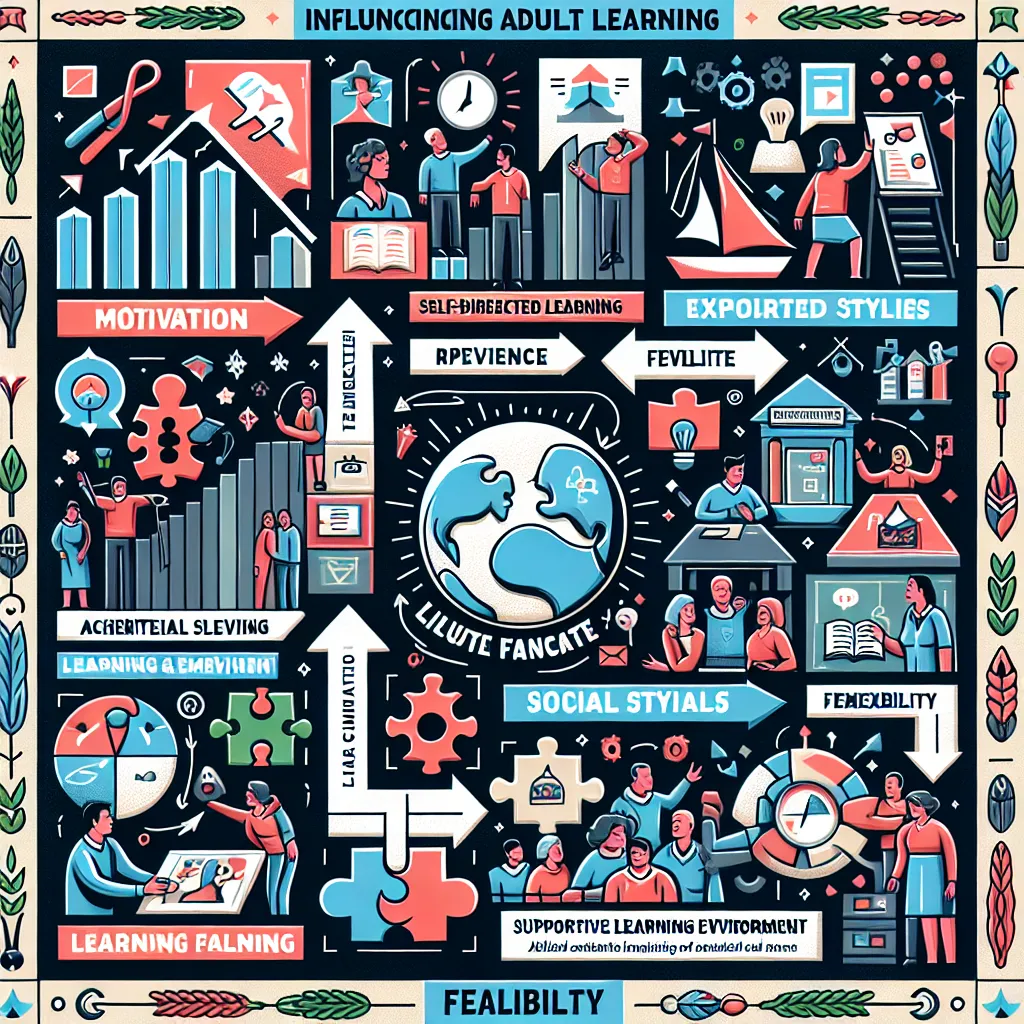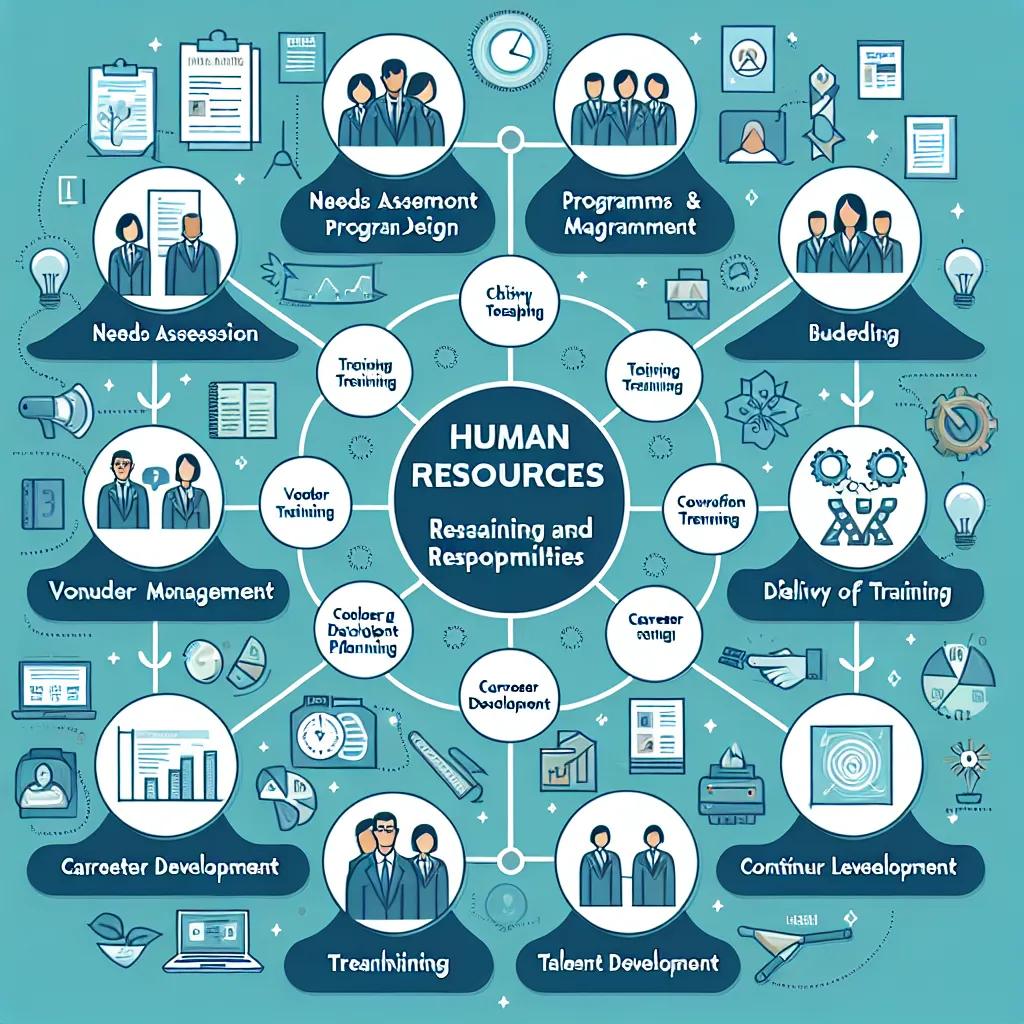Ask AI on The Internet
Question: You have been appointed as the new head of HR at Company XYZ. The board of directors has asked you to give a presentation on the factors that influence adult learning. Identify and explain using your own words at least eleven (11) factors influencing adult learning. Throughout you’re your answer, offer an example of how these influential factors can be practically considered in T&D initiatives.
Congratulations on your new role! As the head of HR at Company XYZ, conveying your understanding of the factors influencing adult learning will be crucial in guiding effective training and development (T&D) initiatives. Here are eleven factors, each followed by a practical example of how it can be integrated into T&D programs: 1. **Relevance**: Adults need to see the relevance of what they are learning to their personal and professional lives. - **Example**: Customize training modules to directly address job-specific skills and challenges employees face, such as conducting a workshop on advanced data analysis techniques for the data science team. 2. **Experience**: Adult learners bring a wealth of experience that can be a valuable resource in the learning process. - **Example**: Facilitate sessions where employees can share their experiences and best practices, such as a mentorship program where senior staff impart knowledge to newer employees. 3. **Autonomy**: Adults prefer to be self-directed in their learning. - **Example**: Offer flexible learning paths where employees can select courses that align with their career goals via an e-learning platform. 4. **Readiness to Learn**: Adults are more ready to learn when they perceive that the information will help them with real-life tasks. - **Example**: Implement just-in-time training sessions that coincide with new project launches or technology rollouts. 5. **Orientation to Learning**: Adults are problem-centered rather than content-oriented. - **Example**: Use case studies and simulations that allow employees to solve real industry problems during training sessions. 6. **Motivation**: While external rewards are important, internal motivation drives much of adult learning. - **Example**: Recognize and celebrate employee achievements in learning through internal newsletters and reward systems like badges or certifications. 7. **Social Environment**: Interaction with peers can enhance learning. - **Example**: Establish learning groups or forums where employees collaborate on projects or discuss course materials, such as inter-departmental study groups. 8. **Adult Responsibility**: Adults often have multiple responsibilities that can impact their learning. - **Example**: Provide online learning options that employees can complete at their own pace, accommodating different schedules and responsibilities. 9. **Learning Styles**: Recognize that adults have diverse learning styles (visual, auditory, kinesthetic). - **Example**: Incorporate mixed media into training programs, such as videos, podcasts, interactive FQA sessions, and hands-on activities. 10. **Cognitive Development**: Differences in cognitive development stages can affect how adults learn. - **Example**: Tailor training materials to accommodate varying cognitive abilities, using clear and straightforward language for beginners and more complex scenarios for advanced learners. 11. **Barrier Removal**: Identify and remove barriers to learning, such as fears, stress, and past negative learning experiences. - **Example**: Create a supportive learning environment through constructive feedback and positive reinforcement, and provide resources like counseling services for stress management. ### T&D Initiative Implementation Example: **Training Program: Comprehensive Leadership Development** 1. **Relevance**: Identify current leadership challenges within the company and tailor the curriculum to address these specific needs. 2. **Experience**: Hold roundtable discussions where veteran leaders share insights and strategies that worked for them. 3. **Autonomy**: Allow participants to choose from a menu of leadership-related topics based on personal interest and career goals. 4. **Readiness to Learn**: Schedule the training to precede major company-wide changes where strong leadership will be crucial. 5. **Orientation to Learning**: Utilize real-life case studies that require participants to devise and present strategic solutions. 6. **Motivation**: Implement a recognition program where completed courses contribute to career advancement opportunities. 7. **Social Environment**: Encourage networking through workshops and social events linked to the training sessions. 8. **Adult Responsibility**: Offer evening or weekend sessions to cater to different availability. 9. **Learning Styles**: Create a balanced program including videos of great leaders, auditory lectures, group discussions, and role-playing exercises. 10. **Cognitive Development**: Develop starter to advanced modules to cater to various levels of cognitive development among staff. 11. **Barrier Removal**: Provide a confidential forum for attendees to voice concerns and areas of hesitation regarding their leadership roles. By considering these factors, you can develop robust and engaging adult learning programs that meet the diverse needs of Company XYZ's workforce and foster a culture of continuous improvement and development.
Think your answer is better than the AI's? Post it below.
Other Most Relevant Posts:
 Ask AI: Five other functions/responsibilties that may form part of training and develpment within the human resource department
Ask AI: Five other functions/responsibilties that may form part of training and develpment within the human resource department
Question Tags
If you want your question answered by an AI, click here.






Post your own comment: